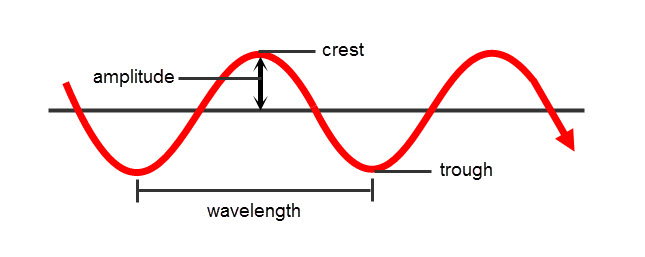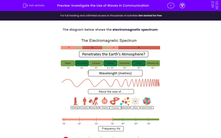The diagram below shows the electromagnetic spectrum:
.png)
Infrared radiation:
Radio waves, light and microwaves are part of this family of waves. They are used for heating and cooking food, but they are also used in communication technology.
Microwaves are used for mobile phones, satellite TV and long distance communication. Microwave aerials are on high buildings because transmitters and receivers have to be in 'line of sight'.
Satellite dishes are microwave receivers that deliver satellite television channels.
Satellites orbiting the Earth are in line of sight of a huge aerial on the ground which handles a great number of phone calls and television pictures at the same time.
Many people worry about the position of aerials and the excessive use of mobile phones, due to concerns about the possible risk of cancer. Young people who are still developing are at higher risk of being affected. Microwave signals can interfere with medical equipment and they must be switched off in hospitals.
Infrared signals are used to make remote controls, wireless computer mice and security alarm sensors work. Signals emitted by remote controls are digital signals which only have two values (on and off) and that can minimise the effect of interference.
Radio waves are also useful for wireless technology and, of course, the radio. They are reflected off solid surfaces, so sometimes provide signals in hard to reach areas.
Light has many uses, including communication, and can be sent with just a torch. This type of signal needs to be decoded.
Sound is not part of the electromagnetic spectrum, but it is still a wave and widely used in communication. Humans and other animals can communicate using sound.
Waves have a number of properties: amplitude, wavelength, frequency and speed. Study the diagram below, as some questions will be about the properties of waves. The speed of a wave is calculated using the following formula:
wave speed = frequency x wavelength

Now you've read all that (phew!), let's have a go at answering some questions about waves. Quick - on to the first question!








